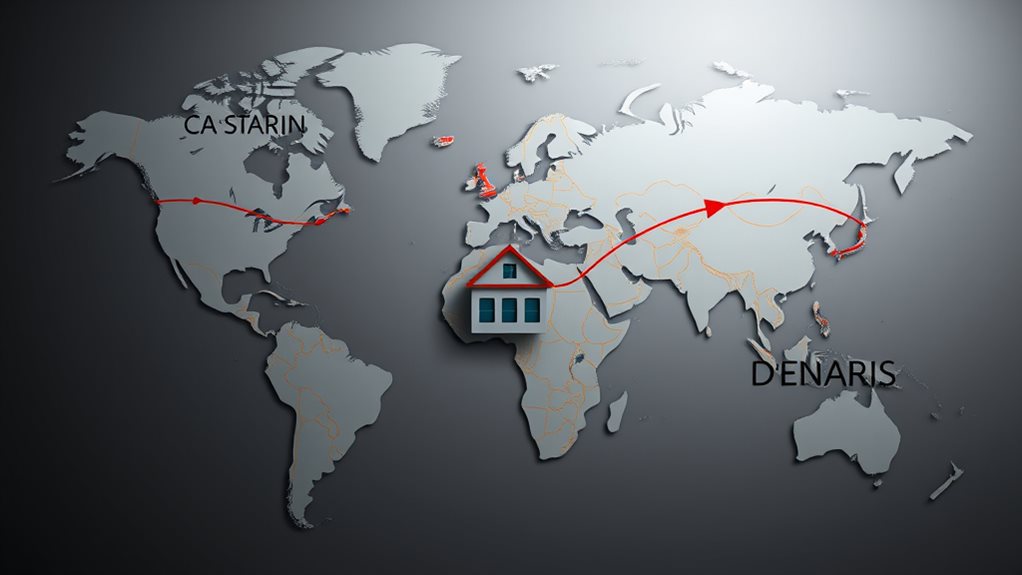Apr 11, 2025
International Cooperation on Gambling Regulation: Addressing Cross-Border Issues
As you explore the complexities of gambling regulation, consider the importance of international cooperation in addressing cross-border issues. Disparate laws can create confusion and uneven playing fields, making it essential for jurisdictions to collaborate. By exchanging best practices and utilizing technological advancements, you can enhance regulatory consistency and consumer protection. This collaborative approach is key to harmonizing regulations, but what challenges and opportunities lie ahead in this evolving landscape?
Online gambling often transcends national borders, creating challenges for regulation and enforcement. International cooperation is essential to address issues such as cross-border crime and player protection. Learn about these collaborative efforts with Fantabettiamo.

The Growing Need for Global Regulatory Frameworks
As online gambling continues to expand across borders, the necessity for cohesive global regulatory frameworks becomes increasingly apparent.
You’re witnessing a rapidly evolving market where differing national laws create regulatory disparities. These disparities can lead to jurisdictional conflicts and inconsistent enforcement, challenging operators and consumers alike.
By establishing global standards, you can guarantee a more uniform approach to regulation, minimizing the risks associated with varied legal interpretations.
Implementing global standards would facilitate cooperation among regulators and improve market integrity. It would provide a level playing field for operators and help protect consumers from fraudulent practices.
Furthermore, harmonized regulations could enhance the industry’s credibility, promoting responsible gambling and reducing the potential for legal loopholes.
Ultimately, global standards are essential for a fair and secure gambling environment.
Challenges in Harmonizing Gambling Regulations
While the necessity for global regulatory frameworks in gambling is increasingly clear, harmonizing these regulations presents significant challenges.
You’re likely aware that regulatory discrepancies across jurisdictions create confusion and uneven playing fields. Different countries have varying attitudes towards gambling, leading to diverse legal frameworks that complicate international cooperation. Achieving consensus among nations requires substantial stakeholder engagement, which isn’t always straightforward. Cultural differences, economic priorities, and political landscapes further complicate alignment.
Moreover, the rapid evolution of online gambling technologies can outpace existing regulations, making harmonization even more challenging.
You must consider that aligning regulations involves balancing strict oversight with industry innovation, without stifling economic opportunities. Ultimately, while the goal is desirable, the path to harmonized gambling regulations is fraught with obstacles that demand careful navigation.
Collaborative Efforts and Success Stories
Despite the challenges in harmonizing gambling regulations, collaborative efforts have yielded notable successes. By forming regulatory partnerships, countries have shared best practices, enhancing their ability to address cross-border issues effectively.
These partnerships foster a cooperative environment where regulators can learn from each other’s experiences, adapting successful strategies to their unique contexts. For example, the European Gaming and Betting Association’s initiatives have facilitated dialogue among member states, leading to more consistent enforcement of rules across borders.
Additionally, the International Association of Gaming Regulators has played a pivotal role in promoting standardization and cooperation. By pooling resources and expertise, these collaborations have strengthened regulatory frameworks, ensuring a more robust approach to managing gambling activities that transcend national boundaries.
Technological Innovations in Cross-Border Enforcement
Technological advancements are redefining how regulators tackle cross-border enforcement in the gambling sector.
You’re seeing a shift towards utilizing blockchain technology to enhance transparency and traceability in transactions. This technology guarantees that every stakeholder can access an immutable ledger, reducing the potential for fraudulent activities.
Data sharing among international regulatory bodies is another game-changer. By collaborating and exchanging critical information in real-time, you can identify and mitigate potential risks more effectively.
Furthermore, these innovations allow for seamless integration of cross-border enforcement efforts, guaranteeing that operators adhere to diverse legal frameworks.
Though challenges persist, leveraging technology in these areas considerably strengthens regulatory mechanisms, fostering a more accountable and secure international gambling environment.
Future Prospects for International Gambling Regulation
As the international gambling landscape continues to evolve, regulators face both opportunities and challenges in shaping its future.
You’re witnessing emerging trends that demand attention, such as digital currencies and virtual reality casinos. These innovations require regulatory advancements to guarantee fair play and consumer protection.
The global nature of online gambling necessitates collaboration among jurisdictions to address cross-border issues effectively.
You can’t ignore the potential for harmonized regulations that streamline compliance for operators while safeguarding players.
However, balancing national interests with international cooperation remains complex.
By embracing technological solutions and fostering dialogue, regulators can navigate these complexities.
As you look ahead, the focus should be on adaptability and proactive measures to keep pace with industry developments, guaranteeing a secure and fair gambling environment worldwide.
More Details